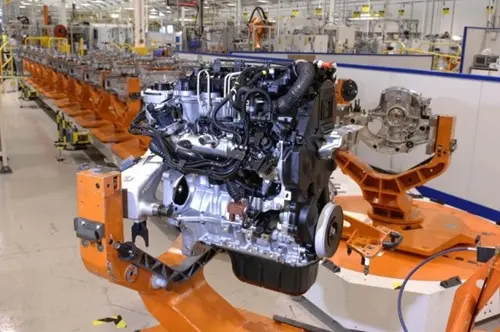While environmentally friendly lighting has been making consistent inroads in the residential sector, public buildings and large factories have been where it's made the greatest impact. Cities, corporations and contractors across the United States are increasingly realizing that efficient commercial lighting can save them loads of money while also providing more comfortable work environments.
Automotive companies improve lighting efficiency in factories
The Environmental Protection Agency's Energy Star Challenge for Industry is encouraging large manufacturers nationwide to implement energy savings solutions to make their factories more efficient. One of the most prominent examples of the program's success is the General Motors manufacturing plant in Spring Hill, Tenn. As one of 63 GM facilities throughout the country to meet the EPA's challenge, both the stamping and engine operations at the Spring Hill plant have reduced their consumption by a combined 40 percent in less than two years.
Many of the technologies employed at the plant to realize that reduction, and its attendant $1.9 million in savings, came in the lighting department. Automated lighting and wireless lighting controls were a major part of the process, helping the plant to reduce electricity usage when parts of the factory weren't in use. It's all part of an effort that has helped GM save $162 million in its attempt to meet the standards set down by the EPA.
"Creativity and energy management go hand-in-hand at GM," Tim Lee, executive vice president of Global Manufacturing, told The Tennessean. "We've been consistently cutting energy use and emissions each year. Environmental responsibility – and its corresponding business benefits – continues to be an everyday driver within our facilities."
Other global automotive companies are making similar strides in their U.S. facilities. According to The Strategic Sourceror, Volkswagen's Chattanooga, Tenn., assembly plant has implemented outdoor lighting controls to improve energy efficiency at the factory.
Cities and towns installing energy efficient lighting in public buildings
Visalia, Calif., is in the process of implementing a major overhaul to the way it lights its public buildings, as reported by The Business Journal, a publication in the San Joaquin Valley. Both City Hall buildings, the local convention center and senior center, several of the city's community centers, the police department headquarters, municipal airport and four fire stations, are among the 19 public buildings that are in the process of reducing their carbon footprint by installing energy efficient products like occupancy sensors and indoor and outdoor lighting controls throughout the facilities.
It's the kind of massive undertaking that will be a boon to local contractors, who can find more information about the projects on the city's purchasing website. Ultimately, the city expects to reduce power consumption by 621,000 kilowatt hours per year, resulting in an annual cost savings of $90,000.
Although on a smaller scale, Homer Township, Ill., is taking measures similar to Visalia in its pursuit of reducing energy usage in its public buildings. According to The Chicago Tribune, beginning Sept. 3, the administration building and town hall will be getting exterior LEDs as part of a lighting efficiency makeover. Grant money will help defray some of the costs, and the project is expected to be complete by the end of October.





